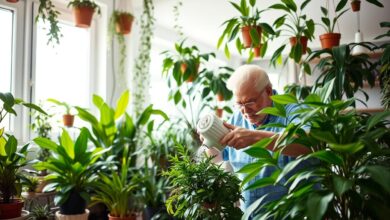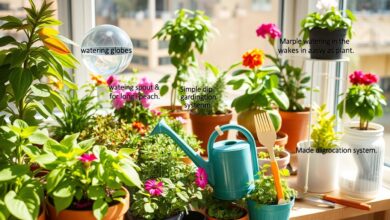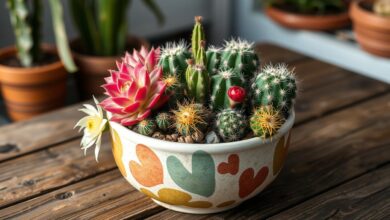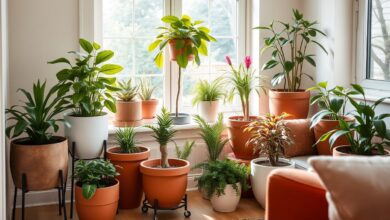Elderly Garden: Creating Joy for Seniors Outdoors
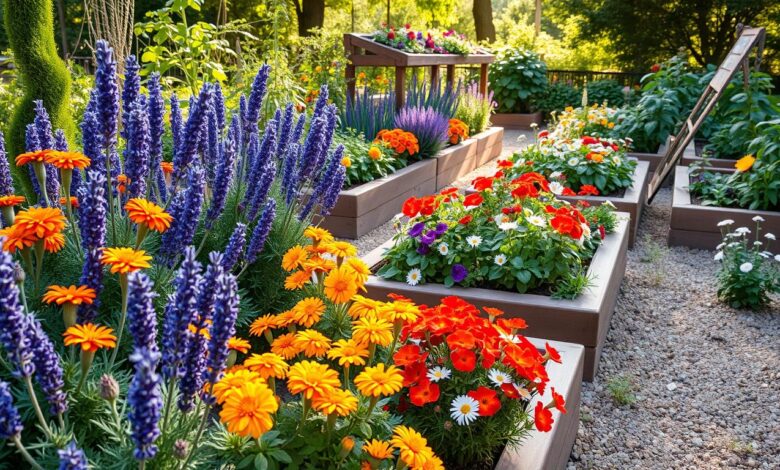
In the golden years, gardening can be a profound source of joy, nourishment, and therapeutic solace for seniors. The elderly garden becomes a canvas for creativity, growth, and adaptation as older adults’ needs and abilities evolve. By incorporating accessible designs, ergonomic tools, and restorative benefits, this outdoor haven can transform into a haven where seniors can thrive, connect with nature, and experience the boundless rewards of horticultural pursuits.
Gardening has long been recognized for its myriad therapeutic benefits, particularly for the aging population. From cultivating a sense of purpose and accomplishment to fostering social interaction and reducing stress and anxiety, the elderly garden offers a multitude of pathways to enhanced well-being. As seniors engage in the gentle rhythms of planting, tending, and harvesting, they find themselves immersed in a restorative connection with the natural world, a connection that can be especially meaningful in the later stages of life.
Table of Contents
Cultivating Wellness: The Health Benefits of Gardening for Seniors
Gardening is not merely a hobby—it’s a source of numerous health benefits for seniors. Engaging with nature through gardening can act as a natural stress reliever, reducing cortisol and blood pressure levels. Gardening tasks like digging and planting also give older adults’ bodies a good stretch, improving mobility and flexibility—vital components to staying spry in the golden years.
Regular exercise from pottering around in garden spaces helps prevent osteoporosis by keeping bones strong. Furthermore, studies have shown that outdoor activities like gardening decrease dementia risk by 36%. Nurturing plants can cultivate wellness for both body and mind, providing seniors with a sense of purpose and accomplishment.
- Gardening has been shown to lower blood pressure in older adults.
- Gardening provides a form of enjoyable and moderately intense exercise for seniors.
- Exposure to gardens and simple gardening tasks aid in memory care in older adults with Alzheimer’s or memory impairments.
- Gardening helps maintain and improve motor skills in seniors.
- Group gardening activities promote social benefits among older adults.
- Gardening is a stress-relieving activity and can boost the immune system in seniors.
The therapeutic power of gardening extends beyond the physical. A study in the journal Ageing & Society reported that older adults experienced better sleep patterns, less stress, and enhanced self-esteem through gardening. By nurturing plants, seniors can cultivate their own well-being and thrive in their golden years.
How to Start a Senior-Friendly Garden
Creating a garden that caters to the needs and abilities of older adults requires thoughtful planning and the right equipment. The key to a successful senior-friendly garden lies in choosing the appropriate tools that minimize physical strain and promote independence.
Choosing the Right Tools
Ergonomic designs are a game-changer when it comes to senior-friendly garden tools. Look for gardening implements with soft, cushioned grips and extended handles that reduce the need to bend or strain. Adaptive gardening tools, such as pruners with spring-loaded mechanisms, make it easier for seniors with limited dexterity to maintain their plants.
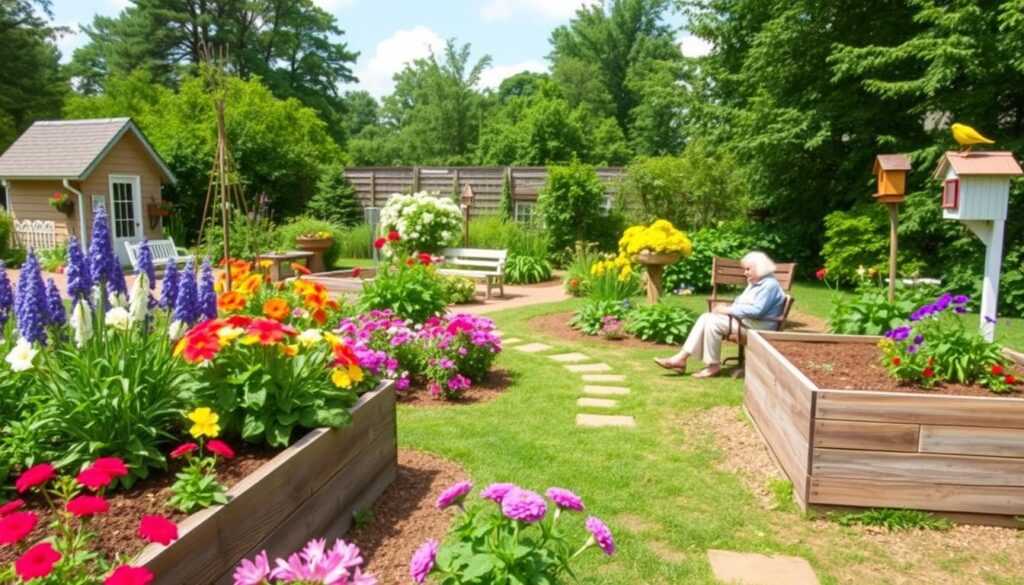
Lightweight tools are another essential for older gardeners. Avoid heavy-duty equipment that can become cumbersome over time. Invest in ergonomic designs like foam-padded kneelers and lightweight watering cans to make gardening a more comfortable and enjoyable experience.
| Tool Type | Recommended Features |
|---|---|
| Pruners | Spring-loaded mechanism, cushioned grips |
| Trowels | Long handles, lightweight construction |
| Rakes | Adjustable length, lightweight material |
| Watering Cans | Foam-padded handles, lightweight design |
| Kneelers | Padded cushions, stability features |
By gearing up with the right tools, seniors can engage in the joyful activity of gardening while maintaining their independence and minimizing physical strain. With a bit of planning and the right equipment, the path to a thriving senior-friendly garden is paved for years of enjoyment.
Low-Maintenance Plant Choices for Senior Gardeners
Gardening can be a source of joy and nourishment in the golden years, but it doesn’t have to be backbreaking. Vibrant blooms like marigolds and petunias are perfect as recommended plants for elderly gardening, offering color without constant care. Herbs, such as basil, chives, and mint, are nature’s gift that keeps on giving, growing like weeds and rewarding seniors with fresh flavors. For the veggie-inclined, cherry tomatoes and leafy greens provide nutritional benefits while requiring minimal fuss. Sow easy, reap the rewards, and create a thriving elderly garden.
Flowers That Flourish with Minimal Fuss
- Marigolds are vibrant, easy to care for plants that require minimal watering and can repel pests with their strong scent.
- Petunias offer a pop of color, are drought-tolerant, low-maintenance, and adaptable to different environments.
- Lavender is a popular low-maintenance flowering plant for seniors due to its drought-tolerant properties and minimal pest issues.
- Coneflowers are known for their hardiness and adaptability, attracting butterflies and thriving in various soil types and light conditions.
Herbs & Veggies from Garden to Table
Herbs, such as basil, chives, and mint, are nature’s gift that keeps on giving, growing like weeds and rewarding seniors with fresh flavors. For the veggie-inclined, cherry tomatoes and leafy greens provide nutritional benefits while requiring minimal fuss.
| Plant | Watering Needs | Sunlight Requirements |
|---|---|---|
| Lavender | Water once or twice weekly | Full sunlight |
| Marigolds | Moderate watering | Full sunlight |
| Coneflowers | Occasional watering; tolerate drought | Full sunlight; tolerate partial shade |
Adapting Gardening Activities for Older Adults’ Needs
Gardening can be a joyful pursuit at any age, but as we grow older, bending over rows of plants may feel more like a chore than a pleasure. Fortunately, with a few practical tips, seniors can continue nurturing their adapting gardening passion without discomfort.
Tweaking Tools for Comfortable Use
Modifying everyday ergonomic tools can make a significant difference in the comfort and ease of gardening for older adults. Simple modifications, such as adding foam padding or non-slip tape to tool handles, can cushion achy joints and provide a better grip, reducing physical stress on hands struggling with motor skills or arthritis-friendly conditions.
Additionally, utilizing lightweight, ergonomically designed tools can minimize fatigue and strain on seniors’ bodies. Incorporating these small adjustments can mean hours more comfort in the garden space, allowing older adults to continue enjoying their green-fingered pursuits.
| Adaptation | Benefit |
|---|---|
| Foam padding on tool handles | Cushions achy joints and provides a better grip |
| Non-slip tape on tool handles | Reduces physical stress on hands with motor skill or arthritis issues |
| Lightweight, ergonomic tools | Minimizes fatigue and strain on the body |
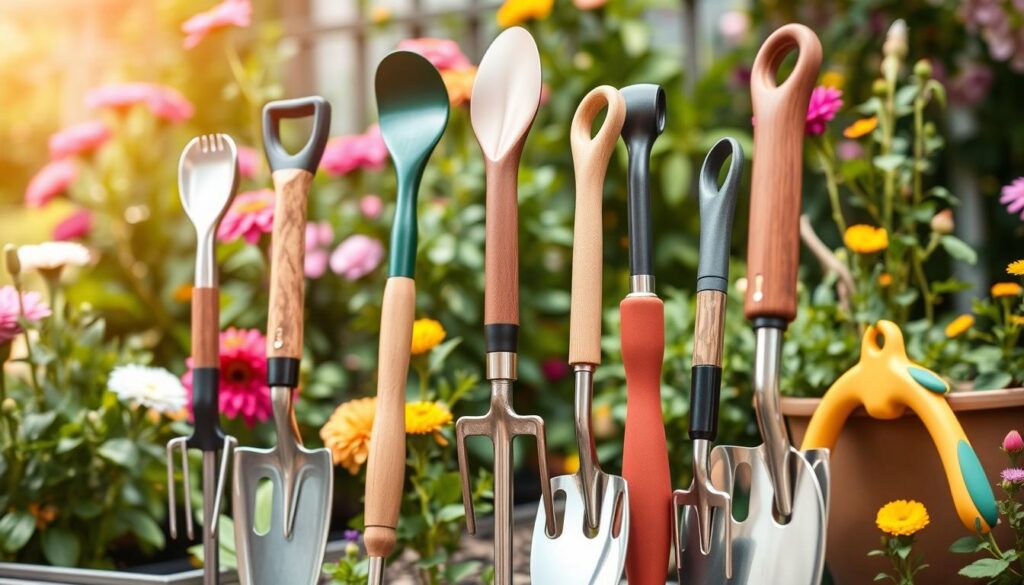
By making these simple adjustments, seniors can continue to enjoy the mental, physical, and emotional benefits of gardening well into their golden years, without the discomfort of traditional gardening tools and techniques.
Sustainable Gardening Practices in Assisted Living Communities
Sustainable gardens in assisted living facilities represent a thriving hub for social interaction and physical activity for residents. Incorporating accessible shade areas and stable furniture supports seniors during their favorite gardening activities. Using raised beds or vertical gardening techniques lets older adults tend their plants comfortably at waist level, turning heavy lifting from traditional gardening into an obsolete chore.
These sustainable gardens become more than just places to plant; they’re canvases for creativity and growth that adapt as residents’ needs change, promoting green living and senior health. Research has shown that gardening can decrease dementia risk by 36%, making it a significant activity in preventing cognitive decline among seniors. Additionally, regular gardening activities help reduce cortisol levels, acting as a natural stress reliever for older adults.
| Sustainable Gardening Practices | Benefits for Senior Living Communities |
|---|---|
| Raised beds Vertical gardening Accessible shade areas Stable gardening furniture | Increased social interaction Improved physical activity Reduced dementia risk Stress relief through gardening Promotion of green living and senior health |
By incorporating these sustainable gardening practices, senior living communities can create vibrant, inclusive spaces where older adults can thrive, find joy in nature, and lead fulfilling lives throughout their retirement years. These gardens become more than just green spaces; they’re hubs of activity, wellness, and community engagement, promoting the holistic well-being of the residents.
The Role of Gardening in Disease Prevention Among Seniors
Gardening is not merely a hobby; it’s a secret weapon against illness for older adults. The physical activity, cognitive stimulation, and stress reduction that gardening provides can help prevent disease and maintain overall health. Moderate to heavy gardening activity of four or more hours per week has been associated with significantly reduced risk of morbidity and mortality rates in middle-aged and older men with cardiovascular disease.
To keep both seniors and their plants hydrated without the fuss, consider installing drip feeders or taps nearby. This way, watering becomes less about lugging heavy cans and more about taking an easy stroll through the garden oasis – helping fight off diseases linked to dehydration and overheating.
Maintaining Hydration Systems
Gardening’s healing power extends beyond the plants, nurturing the body and mind. Exposure to nature through gardening can enhance psychological well-being through emotion regulation and stress reduction, which can help prevent various health conditions such as osteoporosis, cancer, diabetes, depression, and heart disease.
Gardening groups offer social benefits, such as connecting with nature and other individuals, receiving social support, and contributing positively to the lives of others. Group membership can provide an increased sense of achievement and pride through collaborative endeavors towards environmental restoration and cultivating plants, further reducing stress and promoting disease prevention.
Gardening as a leisure pursuit may maintain or promote older adults’ psychosocial and physical functioning, enhancing their quality of life. With the considerable leisure hours available to seniors, gardening remains one of the least systematically studied industries, despite its potential to combat a wide range of health issues.
elderly garden
The elderly garden is a haven where seniors can connect with nature and thrive. By incorporating accessible designs, adaptive tools, and therapeutic benefits, these gardens become a source of joy and nourishment in the golden years. Whether it’s a private backyard or a community garden space, an elderly garden provides opportunities for older adults to engage in physical activity, cognitive stimulation, and social interaction, all while cultivating a sense of purpose and accomplishment.
As people age, mobility limitations, vision issues, and health concerns can make traditional gardening tasks challenging. However, with thoughtful planning and adaptations, the elderly garden can overcome these barriers and empower seniors to continue their passion for senior gardening.
- Raised beds and containers reduce the need for extended bending, kneeling, or standing, making gardening more accessible for those with mobility limitations.
- Built-in water reservoirs and automatic irrigation systems minimize the physical effort required for watering, an important consideration for older adults who may struggle with temperature regulation or have difficulty gripping hoses.
- Non-slip paths leading to the garden beds ensure safe access, particularly during the winter months when icy or wet surfaces can increase the risk of falls.
The therapeutic benefits of community gardens for seniors go beyond the physical aspects of gardening. Studies have shown that engaging with nature, even in modified ways, can have a positive impact on mental and emotional well-being. Older adults who participate in gardening activities report reduced levels of depression and anxiety, as well as improved cognitive function and overall quality of life.
| Benefit | Impact |
|---|---|
| Improved cognitive function | Slower cognitive decline, better memory and problem-solving skills |
| Reduced depression and anxiety | Enhanced emotional well-being, decreased stress levels |
| Increased physical activity | Improved mobility, strength, and cardiovascular health |
| Meaningful social connections | Reduced isolation, improved overall quality of life |
By creating elderly gardens that cater to the unique needs and preferences of senior gardeners, we can unlock the transformative power of nature and foster a sense of joy, purpose, and well-being in the lives of older adults.
Best Plants for Senior Gardens
When designing a garden for seniors, selecting the right plants is crucial. Low-maintenance plants, such as lavender, sedum, hosta, daylily, and rosemary, thrive with minimal watering, pruning, and fertilization, making them ideal choices for older adults. Plants with sensory appeal, like lavender, lamb’s ear, chocolate cosmos, lemon balm, and mint, can also enhance the gardening experience by engaging multiple senses and providing therapeutic benefits.
These resilient and stimulating plants ensure that the joy of gardening remains accessible and enjoyable for seniors. In fact, a recent study listed 16 easy-to-care-for plants perfect for senior communities, highlighting plant types suited for low-light conditions and inconsistent watering schedules.
Some of the specific plant species recommended for senior gardens include Pothos, Aglaonema, Ponytail Palm, Jade, Spider Plant, Christmas Cactus, Boston Fern, Parlor Palm, String of Pearls, and Prayer Plant. These non-toxic options also provide visual interest and add a touch of greenery to any space.
| Plant | Sun Exposure | Watering Needs |
|---|---|---|
| Sunflower | Full Sun | Medium |
| Dahlia | Full Sun | Medium |
| Hibiscus | Full Sun | Medium |
| Basil | Full Sun | Moderate |
| Thyme | Full Sun | Low |
| Sage | Partial Sun | Low |
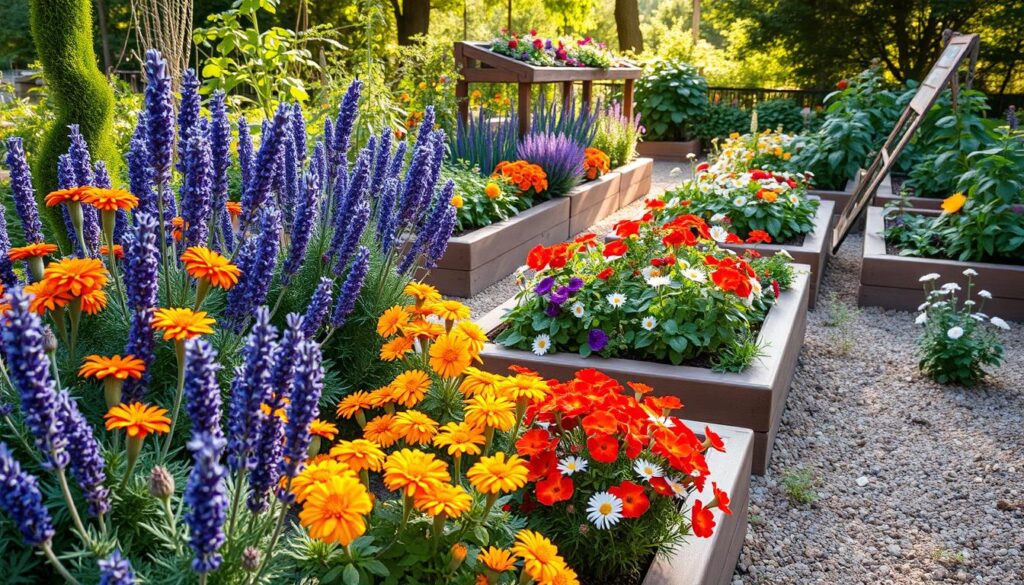
For senior gardeners, the appeal of plants with sensory properties, such as lavender and lemon balm, cannot be overstated. These fragrant options can contribute to a calming and therapeutic experience. Alternatively, for senior communities that do not allow real plants, there are options like fake plants, outdoor gardens, and plant art to consider.
By selecting low-maintenance, sensory-rich plants, senior gardeners can enjoy the physical and mental benefits of tending to their own green space, promoting overall well-being and a connection to nature.
Gardening Tools and Equipment
As seniors embrace the joys of gardening, it’s crucial to select the right tools and equipment that cater to their unique needs. Ergonomic gardening tools, such as hand trowels with cushioned handles, extended-reach pruners, and lightweight rakes, are designed to reduce strain and discomfort during gardening tasks. These tools minimize the risk of fatigue and muscle strain, making gardening more accessible for older adults.
Choosing Ergonomic Tools
Ergonomic tools are a game-changer for senior gardeners. Look for tools that feature lightweight materials like aluminum, fiberglass, and carbon steel, which are easier to maneuver. Claw gloves, offering a dual function for planting and digging, receive positive reviews from seniors for their comfortable grip and protection. Specialized pruning shears, snips, and loppers designed with reduced hand pressure are also invaluable for seniors with weaker hands.
Utilizing Assistive Devices for Gardening
Beyond ergonomic tools, assistive devices can further enhance the gardening experience for seniors. Garden stools, rolling carts, and extended-reach tools allow older adults to engage in gardening with ease, reducing the need for bending and reaching. Accessible planters constructed following ADA standards provide easier access, particularly for seniors in wheelchairs. Lightweight collapsible wagons are essential for transporting plants and materials, minimizing the physical strain.
| Recommended Gardening Tools for Seniors | Benefits |
|---|---|
| Ergonomic hand trowels with cushioned handles | Reduce strain and discomfort during use |
| Extended-reach pruners and loppers | Minimize reaching and bending |
| Lightweight rakes and shovels | Easier to maneuver and use |
| Claw gloves | Provide a comfortable grip and protection |
| Garden stools and rolling carts | Allow for seated gardening and easy transportation |
| Accessible planters and raised beds | Reduce bending and provide easier access |
By choosing the right ergonomic tools and utilizing assistive devices, senior gardeners can fully enjoy the therapeutic benefits of gardening without the risk of strain or discomfort. These thoughtful adaptations ensure that the joy of cultivating a garden remains accessible and fulfilling for older adults.
Creating an Accessible Garden
Gardening is a cherished pastime that can bring immense joy and therapeutic benefits to seniors. To ensure that the garden experience remains accessible and enjoyable for older adults, it’s crucial to incorporate senior-friendly features into the design. By focusing on accessibility, seniors can fully engage in the activities and reap the rewards of their green-thumbed endeavors.
One key element in creating an accessible garden is the incorporation of raised beds. Raised garden beds, typically constructed with a planting depth of 8 to 10 inches and a table height of 27 inches from the ground, allow seniors to tend to their plants with greater ease, reducing the need to bend or kneel. Experts recommend a raised bed width not exceeding 4 feet for easy reach, with a height of 24 inches for wheelchair users or 30 inches for standing individuals with mobility challenges.
Alongside raised beds, comfortable seating areas strategically placed throughout the garden can enhance the overall experience. Benches or chairs with back support provide seniors with opportunities to rest and admire their handiwork, making the gardening journey more comfortable and sustainable.
- Incorporate wide, level pathways (at least 4 feet wide) to accommodate wheelchairs, walkers, and wheelbarrows, ensuring easy navigation through the garden.
- Utilize ergonomic gardening tools, such as those with foam grips, to mitigate pain associated with conditions like arthritis.
- Choose tools with brightly colored handles to aid seniors with vision problems.
By designing an accessible garden with senior-friendly features, you can create a space that empowers older adults to engage in the joys of gardening, promoting both physical and mental well-being. With the right adaptations, the garden can become a haven of tranquility and fulfillment for the golden-aged green thumbs.
| Feature | Recommendation |
|---|---|
| Raised Beds | Planting depth of 8-10 inches Table height of 27 inches from the ground Width not exceeding 4 feet for easy reach Height of 24 inches for wheelchair users or 30 inches for standing individuals |
| Pathways | At least 4 feet wide to accommodate wheelchairs, walkers, and wheelbarrows |
| Gardening Tools | Ergonomic tools with foam grips Brightly colored handles for seniors with vision problems |
The Therapeutic Power of Gardening
Gardening holds a special significance for seniors, offering a wealth of therapeutic benefits that can enrich their lives. The act of nurturing plants and watching them flourish can provide a profound sense of purpose and accomplishment, boosting self-esteem and mental well-being. Engaging in gardening activities not only promotes physical health through low-impact exercise but also stimulates cognitive function and fosters opportunities for social interaction.
Recent studies have highlighted the impressive therapeutic effects of gardening for seniors. A comprehensive review of 480 articles found that in all but two studies, gardening therapy and therapeutic gardens induced psychophysiological improvements in people with dementia, particularly in the areas of engagement, agitation, depression, stress, and medication use.
Additionally, a meta-analysis of 32 studies with over 2,300 participants confirmed the powerful impact of contact with nature in promoting positive emotional states and reducing stress. Gardening has been shown to enhance creativity, self-esteem, sensory stimulation, and even physical rehabilitation through improved coordination and balance.
The therapeutic benefits of gardening extend far beyond mental well-being. Horticultural therapy, a specialized field that utilizes plant-based activities for rehabilitation and treatment, has gained significant recognition. Horticultural therapists with specialized training can help seniors unlock the full potential of gardening, tailoring activities to their unique needs and abilities.
By introducing seniors to the joys of gardening, we can unlock the profound therapeutic power it holds, enhancing their overall quality of life and fostering a deeper connection with the natural world. The therapeutic benefits of gardening for seniors are undeniable, making it a valuable tool for promoting holistic wellness and enriching their golden years.
Conclusion
Gardening for seniors is not just a hobby; it’s a fulfilling and meaningful activity that can enhance their overall well-being. By creating accessible and sustainable elderly gardens, incorporating adaptive tools and low-maintenance plants, and harnessing the therapeutic power of senior gardening, we can unlock the joy and benefits of outdoor activities for older adults.
Whether it’s cultivating wellness, fostering social connections, or providing a sense of purpose, an elderly garden becomes a haven for seniors to thrive and embrace the golden years. The therapeutic benefits of gardening, from reducing stress and anxiety to improving cognitive function and physical fitness, make it a remarkable tool for promoting the health and happiness of our elderly population.
As we strive to make gardening more accessible and sustainable for seniors, we can empower them to reconnect with nature, foster a renewed sense of purpose, and ultimately, enrich their lives in profound ways. The elderly garden is a space where the wisdom and experience of our seniors can bloom, inspiring us all to celebrate the joys of a life well-lived.
FAQ
What are the health benefits of gardening for seniors?
Gardening can act as a natural stress reliever, reduce cortisol and blood pressure, improve mobility and flexibility, prevent osteoporosis, and even decrease the risk of dementia. It’s a great way for older adults to stay active and nurture their overall well-being.
What are some tips for choosing the right tools for senior gardeners?
Ergonomic designs, such as soft grips and long handles, can make gardening tools more accessible for older adults. Lightweight options, like easy-to-hold pruners and foam-padded kneelers, can also help reduce strain and discomfort.
What are some low-maintenance plant choices for an elderly garden?
Vibrant flowers like marigolds and petunias, as well as herbs (basil, chives, mint) and vegetables (cherry tomatoes, leafy greens) that are easy to grow and maintain, are great options for senior gardeners.
How can gardening activities be adapted for older adults’ needs?
Simple modifications, such as cushioning tool handles with foam or tape, can make gardening more comfortable for seniors dealing with issues like arthritis or reduced motor skills.
How can sustainable gardens be incorporated into assisted living communities?
Assisted living facilities can create thriving garden spaces with accessible shade, stable furniture, raised beds, and vertical gardening techniques to support seniors’ gardening activities.
What are the therapeutic benefits of gardening for seniors?
Gardening can provide a sense of purpose, accomplishment, and joy for older individuals, while also promoting physical health through low-impact exercise, cognitive stimulation, and social interaction.
What are some of the best plants to include in an elderly garden?
Low-maintenance plants like lavender, sedum, hosta, daylily, and rosemary, as well as plants with sensory appeal like lavender, lamb’s ear, and lemon balm, are great choices for senior gardens.
What type of gardening tools and equipment are recommended for seniors?
Ergonomic tools with cushioned handles and extended-reach capabilities, as well as assistive devices like garden stools, rolling carts, and extended-reach tools, can make gardening more accessible and enjoyable for older adults.
How can an accessible garden be designed for seniors?
Incorporating features like wide and level pathways, raised beds, and comfortable seating areas can create a garden that is easy to navigate and engage with for older individuals.

